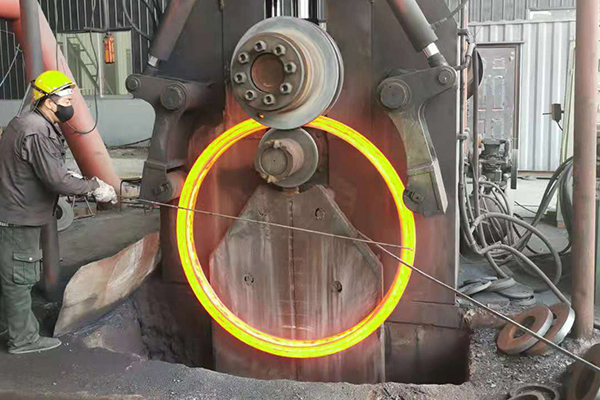The forging process usually includes the following steps: selection of high quality billet blanking, heating, forming and forging cooling.
Forging processes include free forging, die forging and thin film forging. During production, different forging methods are selected according to the quality of the forgings and the number of production batches.
Free forging low productivity, large processing allowance, but simple tools, large versatility, widely used in forging single and small batch forgings, simple shape. Free forging equipment includes air hammer, steam hammer and hydraulic press for the production of small, medium and large forgings. Die forging has high productivity, simple operation, easy mechanization and automation. Die forgings have high dimensional accuracy, small machining allowance and reasonable fiber structure distribution, which can further improve the service life of parts. Basic process of free forging: In free forging, the forged shape is gradually forged through some basic deformation processes. The basic processes of free forging are upsetting, lengthening, stamping, bending and cutting. Upsetting is an operation in which a raw material is forged axial to reduce its height and increase its cross section. This type of process is commonly used for forging gear billets and other disc forgings. There are two types of undulations: total upsetting and partial forging. Drawing lengthening is a forging process that increases the length of the billet and reduces the cross section. It is commonly used to produce shafts, such as lathe spindles and connecting rods.
1.stamping
Stamping A forging process in which punches punch through or through holes without the use of punches, bending forging, bending the blank into a certain Angle or shape, cutting and dividing the blank or cutting material.
2. die forging
The heated blank is placed in the forging die, which is fixed to the forging device to be forged.
Die forging Basic Processes Die forging processes: cutting, heating, preforging, final forging, stamping, trimming, quenching and tempering, shot peening. Common processes are upsetting, lengthening, bending, stamping and forming.

Common die forging equipment Common die forging equipment includes die hammer, hot die forging press, flat forging press and friction press. Generally speaking, forging flange quality is better, the general use of die forging production, fine crystal structure, high strength, of course, the price is more expensive. Whether it is casting flange or forging flange, it is the common method of manufacturing flange. Please refer to strength requirements for components used. If the requirements are not high, you can also use rotating flanges.
3.Triple cut flange
The inner and outer diameters of the flange and the thickness of the disc are cut directly on the intermediate plate, and the bolt holes and waterlines are machined. The flange thus made is called cut flange, and the maximum diameter of this flange is limited to the width of the middle plate.
The cutting of the flange
4.Quadruple rolling flange
The process of cutting strips with intermediate plates and then rolling them into circles is called rolling and is used to produce some large flanges. After the winding is successful, the welding is carried out, then the flattening is carried out, and then the waterline and bolt holes are treated.
Post time: Apr-08-2022
